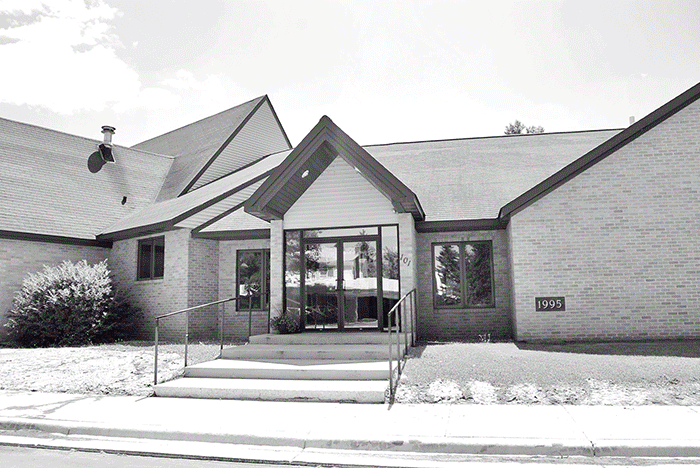St. Peter’s Evangelical Lutheran Church and the Suomi Synod
News | Published on September 27, 2021 at 9:34pm GMT+0000 | Author: Chad Koenen
0
St. Peter’s Evangelical Lutheran Church
By Tucker Henderson
Special to the Dispatch
I recently received a copy of the new book ‘Lost Songs of the Suomi Synod’ by Jonathan Rundman. The 116 page book is a compilation of historic hymns from the Suomi Synod (now a part of the Evangelical Lutheran Church in America) which have been modernized to restore them back to congregational favorites. Our local branch of the Suomi Synod was St. Peter’s Evangelical Lutheran Church in New York Mills. The Suomi Synod was established in Hancock, Michigan in 1890 and Suomi College and Theological Seminary was founded six years later during the same month that St. Peter’s was established here in New York Mills.
Lutheranism has a long history in New York Mills relating directly to the Finnish immigrants who settled the area to farm its newly timbered land. The first congregation of Christians in the area is uncertain, a toss up between the Apostolic Lutheran Finns and the Catholic “Yankees” who worked the Mills. It is most likely, however, that the Roman Catholics were the first Christians in the area. These Catholic worshippers hailed largely from the East coast and made up the workforce of the New York Mills Company who logged the white pine forest that once dominated the region. Not much is known about this early church, though we know it had been organized by 1878 and had raised its own building to be used for worship services. The Congregation went by the name ‘St. Peter’s’ and left the area in favor of St. John the Baptist Church in Bluffton around 1902.
The third church to be started in New York Mills was on July 6, 1892 by the name of the ‘First Finnish Evangelical Lutheran Church’ which has been called ‘Trinity Evangelical Lutheran Church’ since 1946. This church was an independent church until 1924 when it joined the National Evangelical Lutheran Synod, and is now a part of the Missouri Synod. A group from this church wanted to affiliate themselves with the newly created Suomi Synod and an organizational meeting was held on September 27, 1896 (125 years ago Monday) at the home of Tobias Flinkman. The congregation initially held services at the First Finnish Church and later in the upstairs hall of the Olaf Pary building (currently the Cultural Center and at the time a general merchandise store) and also the Congregational Church. They finally settled on the empty Catholic Church in 1908 when they purchased it for $1,200. The church was remodeled and dedication services were held in 1911. This congregation kept the name ‘St. Peter’s’ from the old church.
This original edifice was used until 1958, when it was torn down to be replaced by a larger, modern building which is still used today – the building that I was baptized in. The Finnish language was used exclusively in the church until 1938 when Reverend Eino Tuori came once a month from Duluth to preach in both English and Finnish. English soon became the more widely used language in 1953 and like most churches in the area, the Finnish language has since fallen to an ancestral status. St. Peter’s affiliation with the Suomi Synod ended in 1962 when the Synod merged with the Lutheran Church in America (LCA) and in 1988 merged again into the Evangelical Lutheran Church in America (ELCA) of which it belongs to today.
Getting back to Rundman’s book, ‘Lost Songs of the Suomi Synod,’ many of these songs were surely sung by the members of St. Peter’s in the early and middle years of the congregation. One has even trickled its way into the current Evangelical Book of Worship used by the ELCA, despite years of Synod merging and hymnal editing. Rundman’s motivation in his research of these hymns share a familial interest with my motivations to write these history columns. We also share ties with the Suomi Synod as we both grew up in churches that started as Suomi Synod congregations which eventually merged into the ELCA churches that they are today. Strangely enough, neither of us were born until after the Suomi Synod had already merged into a new Synod. These lost hymns provide a link to the times and situations that our ancestors and former community members experienced and helped build.
As I page through my own small collection of Lutheran hymnals, I find some of these hymns both in Finnish and in English depending on which hymnal I pull out. I see songs that likely were sung when my great grandfather, Einar Piippo, was rebaptized in order to become a member of St. Peter’s. Perhaps one was sung when my grandparents were married? I KNOW that the Green Hymnal (what am I kidding, they’re almost ALL green), I should say the Lutheran Book of Worship, shaped the last four generations of my family as even I grew up singing songs out of it. I would recommend ‘Lost Songs of the Suomi Synod’ to any local Finnish historian, especially if you have ties to the Suomi Synod. To know your own history is the start of learning a larger history of your community and vice versa.

